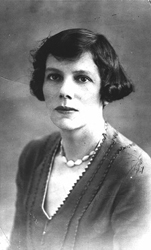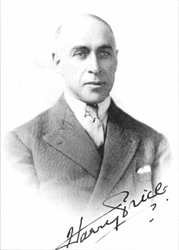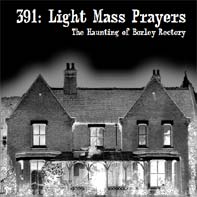|
|
1. Nun’s Walk
2. Don’t Carlos, Don’t
3. Ring Out, Wild Bells
4. Séance In The Blue Room
5. Messages For Marianne
6. Novena
7. The Fate Of Katie Boreham
8. Sunex Amures
9. The Rectory Aflame
10. Bones Beneath The Cellar
Background:
The huge Victorian rectory that dominated the Essex village of Borley, from the time it was first built in 1863 to the night it was gutted by fire in 1939, has become famous - some might say notorious - as "the most haunted house in England".

Marianne Foyster, circa 1922
Despite the fact that the fire-blacked ruins were all but demolished by the end of 1945 and no trace of the building now exists, unexplained phenomena are still reported at the site of the Rectory and in the parish church opposite.
Bibliography:

Harry Price, Psychic Investigator
Peter Underwood has probably taken over Harry Price's role as the greatest living expert on the Borley phenomenon. With Paul Tabori he wrote The Ghosts Of Borley (1973) and has also published Borley Postscript (2001) and contributed to The Borley Rectory Companion (2009)
The Enigma Of Borley Rectory (1996) by Ivan Banks is an astoundingly detailed and well-researched addition to the literature.
Taking a more sceptical approach is The Haunting Of Borley Rectory (1956) by Eric Dingwall, Mollie Goldney and Trevor Hall, although Robert Hastings' report in the Proceedings of the Society for Psychical Research (March 1969) showed this work to be little more than a thinly-disguised attempt at character assassination, fuelled by Hall's apparent vendetta against Harry Price (who, having died in 1948, was not in a position to defend himself).
Robert Wood's book The Widow Of Borley (1992), while obviously influenced by Hall's anti-Price views, nonetheless remains a fascinating biography of Marianne Foyster, one of the most controversial players in the Borley drama.
Composed, performed, recorded and produced by 391
at Waterden Studios, Scunthorpe
John C. Hocknell: Electronics, Planchette
Mark Lancaster: Guitars, EMF Meter
Sharon Petche: Keyboards, Ouija Board
Theo Maxwell: Tapes, Electronic Voice Phenomena
William Thorne: Percussion, Unexplained Noises
